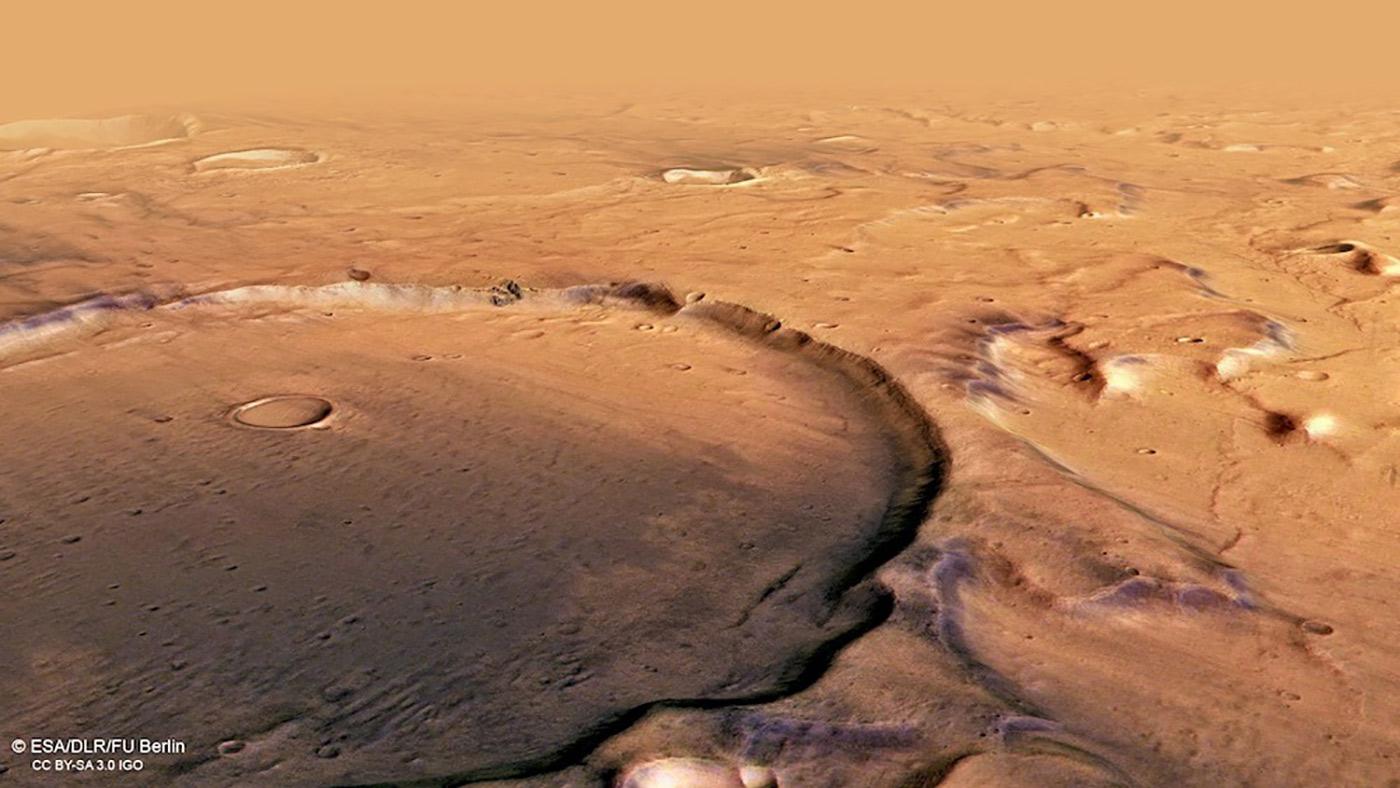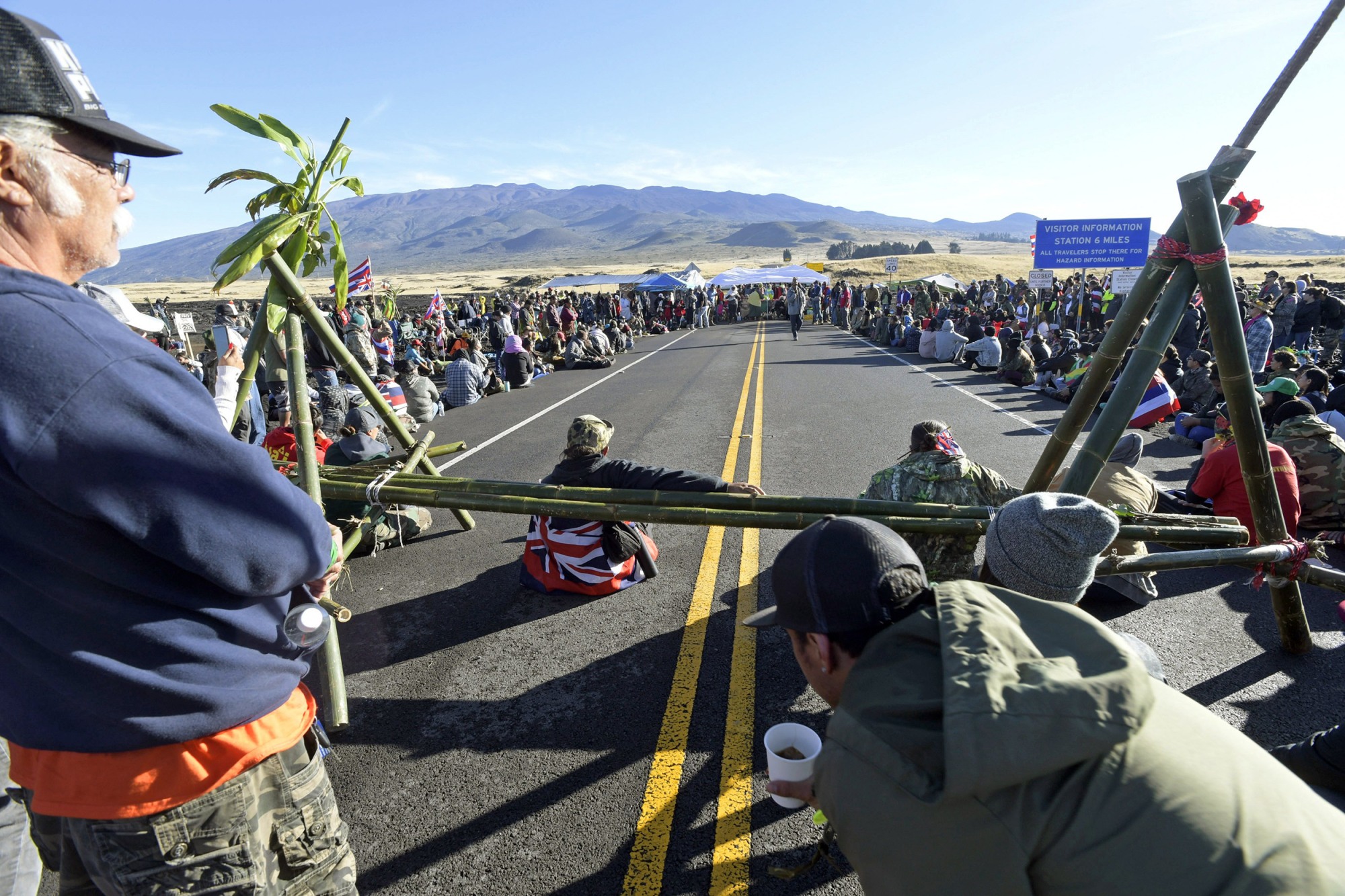
New images of windswept dunes and craters on Mars reveal a great deal about its geological history. Views of the starkly beautify highland valleys captured by the ESA's Mars Express spacecraft seem barren but indicate a watery past. The wind has left its mark as well, according to SETI Institute Senior Research Scientist Lori Fenton. Astronomy.com spoke with Fenton for insight on the sands of Mars:
Lori Fenton, a senior research scientist at the SETI Institute, studies how winds shape planetary surfaces. Fenton notes that the images show wind streaks and dust devil tracks aligned in the same direction. "That suggests, but doesn't prove, that they may have been formed at the same time, or at least that the strong, sand-moving winds seem to blow mainly from the northwest," she told Astronomy.
Fenton adds that darkness on the northwest-facing sides of the mesas and the northwest-facing interior wall of the large crater indicates dark sand carried by the wind. This darkness, combined with the lack of a dune field on the crater floor, suggests the winds are strong, continuous, or both, she says.
For more stories told by the Martian sands, check out Fenton's blog.
- Astronomy: The windswept craters of Mars' Terra Cimmeria
- Cosmic Diary: Lori Fenton's Blog
 The Thirty Meter Telescope Dispute
The Thirty Meter Telescope DisputeControversy surrounds the planned installation of the Thirty Meter Telescope (TMT) on the Island of Hawaii. The site sits on top of Mauna Kea, a dormant volcano that is the Big Island's highest point. The summit is considered one of the best locations in the world for astronomical observation due to the arid conditions and clear, dark skies. However, the area has been a hot topic in local disputes since the 1970s when the first telescopes were constructed. Native Hawaiians consider it the most sacred of Hawaii's five volcanos, with ancient traditions regarding it as a dwelling place of the deities. Citing concern for the area's cultural and environmental value, they have been protesting to prevent the TMT's construction.
Some scientists, while eager to see an enormous, cutting-edge telescope like the TMT get built, are uncomfortable with the current conflict. NBC News MACH noted the response of SETI Institute Senior Planetary Astronomer Franck Marchis, who blogged about the arrests of the peaceful protesters blocking construction:
"I fear we have forgotten that we are guests," astrophysicist Franck Marchis, a senior scientist at the SETI Institute in Mountain View, California, said in a blog post. "We have been invited into someone else's home. And we are returning extraordinary hospitality by trampling on sacred traditions."
Alternative sites for the TMT are under consideration, such as the Canary Islands. The Island of La Palma already hosts the Roque de los Muchachos Observatory and several telescopes, and the area is not considered a sacred site.
- NBC News MACH: A huge telescope in Hawaii could lead us to alien life. First it has to get off the ground.
- Cosmic Diary, Franck Marchis Blog: TMT controversy. I vote for healing.
 Imagining Alien Lifeforms
Imagining Alien LifeformsThe Universe is vast, and our galaxy alone hosts an abundance of planets. It seems improbable that life is unique to Earth, and many scientists looking for extraterrestrial life are trying to imagine the kind of life we might find. A recent article in Science Focus explored speculations from astrobiologists and others who are trying to learn how life emerges and what constrains it. Science Focus spoke to Seth Shostak, Senior Astronomer at the SETI Institute, who believes we'll have some hard evidence of life beyond Earth within our lifetimes:
"I'm willing to bet you a flat white that in the next 20 years we'll find some life," says Dr. Seth Shostak, senior astronomer at the SETI Institute, U.S. "It will probably be microbial life squirting out of Enceladus or maybe Europa, or maybe under the sands of Mars: there are all these places in our own Solar System where we could find this stuff."
As for technologically advanced life, Shostak thinks we probably won't see any that looks quite like us. If we find such beings, they're likely to be machine-based, according to Shostak:
"The majority of the intelligence in the Universe is probably not soft and squishy biology," Shostak says. "The majority of the really smart staff in the Universe is going to be machinery."
- Science Focus: What would alien life actually look like?
In last week's episode: sand, one of the most-used building materials in civilization's history, is running out! Grab your hourglass and give a listen to True Grit. In our previous week's episode, explore the ecosystem that is your immune system in Granting Immunity.
Last time on Facebook Live, join SETI scientists Franck Marchis and Michael Busch for a discussion about Asteroid 2006 QV89 – which will NOT hit Earth this year. Videos of all past Facebook Live events are on our Facebook page: https://www.facebook.com/SETIInstitute/





